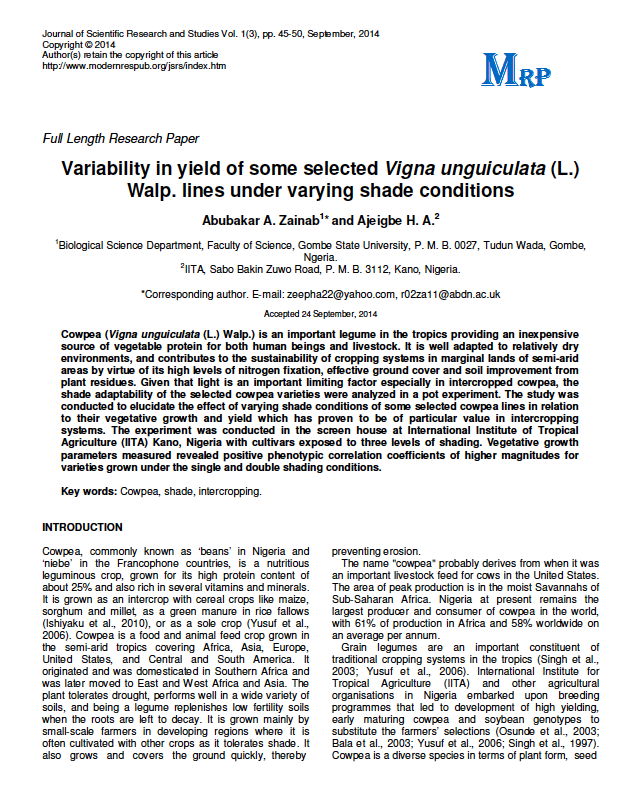Variability in yield and vegetative growth of some selected cowpea [Vigna unguiculata (L.) Walp.] lines under varying shade conditions
Summary
Cowpea (Vigna unguiculata [L.] Walp.) is an important legume in the tropics providing an inexpensive source of vegetable protein for both human beings and livestock. It is well adapted to relatively dry environments, and contributes to the sustainability of cropping systems in marginal lands of semi-arid areas by virtue of its high levels of nitrogen fixation, effective ground cover and soil improvement from plant residues. Given that light is an important limiting factor, especially in intercropped cowpea, the shade adaptability of the selected cowpea varieties were analyzed in a pot experiment. The study was conducted to elucidate the effect of varying shade conditions of some selected cowpea lines in relation to their vegetative growth and yield, which has proven to be of particular value in intercropping systems. The experiment was conducted in the screen house at the International Institute of Tropical Agriculture (IITA) in Kano, Nigeria with cultivars exposed to three levels of shading. Vegetative growth parameters measured revealed positive phenotypic correlation coefficients of higher magnitudes for varieties grown under the single and double shading conditions.
Open resource Download resource

